Valley of the Shadow
Struggling to reassert control over their Indochinese colonies after World War II, the French established a huge air-land base in the valley of Dien Bien Phu. But when the opposing Vietnamese People's Army (VPA) began massing its forces against the base in late 1953, French commanders seized the opportunity to draw their elusive enemy into a decisive set-piece battle.
Defending a series of fortified positions which were reliant upon a single airstrip - and later, risky and inaccurate airdrops - for reinforcement and resupply, the French troops quickly discovered that they had underestimated their enemy. In 56 days of costly close-quarters fighting, the VPA slowly dislodged the French from one strongpoint after another by developing novel tactics and accomplishing incredible feats of engineering.
Drawing upon Vietnamese-language sources never previously employed in Western accounts of the siege, Valley of the Shadow is a dramatic re-telling of the climactic battle of the First Indochina War, the conflict that saw the French expelled from their former colony and set the stage for the "American War” in Vietnam.
Italian Armoured & Reconnaissance Cars 1911–45
The first Italian armoured cars were used in the war in Libya in 1911-12 against the Ottoman Empire. With few tanks being developed, the Italians relied instead on the development of more mobile armoured cars like the Ansaldo Lancia 1 Z, during World War I, but post-war the army, focusing on the Alpine battlegrounds of Italy's northern borders, did not consider armoured cars suitable for reconnaissance duties.
The experience of the Spanish Civil War would provide the much needed last push for the Italians to develop modern armoured cars. The result were the famous AB 41-43 models, which fought against the British in North Africa and Marshall Tito's forces in Yugoslavia, along with other vehicles such as the AS 36 light armoured car.
Using detailed colour plates and contemporary photographs, this book examines the development of the Italian armoured car in the two world wars and the inter-war years, from the deserts of North Africa to the slopes of the Alps.
World War II US Marine Infantry Regiments
The United States Marine Corps came into its own in the Pacific Islands campaign against Japan in World War II. From Guadalcanal to Okinawa, US Marines formed the tip of the spear as Allied forces sought to push the Japanese back to their Home Islands.
This fascinating study tracks the deployments of the various Marine divisions throughout the war and explains their composition, but also goes deeper, to detail the individual regiments - the focus of the marines' identity and pride. It explains the organization of the Marine infantry regiment and its equipment, and how they evolved during the war. The marine infantryman's evolving uniforms, field equipment and weapons are illustrated throughout using specially commissioned artwork and detailed descriptions to produce a fitting portrait of the US military's elite fighting force in the Pacific.
Soviet Cruise Missile Submarines of the Cold War
The Soviet Union's cruise missile submarines from the modified Whiskey, to the Oscar II classes were among the most formidable vessels of the Cold War. They were initially designed to carry land attack nuclear-tipped cruise missiles designed to strike targets on the eastern coast of the United States. By the late 1960s, however, submarine-launched ballistic missiles made the nuclear land-attack mission unnecessary, so existing classes were converted to the ‘carrier killer' role, armed with anti-ship cruise missiles designed to destroy US super-carriers and other important naval targets.
This fully illustrated study examines these powerful machines that were some of the largest and fastest submarines ever built. If war had broken out, they would have been at the forefront of the Soviet Navy's campaign to destroy NATO's sea power and cut America's sea link with Europe.
Operation Crossbow 1944
In mid-1943, Allied intelligence began to pick up the signs of unusual German construction in remote locations near the Channel Coast. Several massive fortifications were beginning to take shape, and they appeared to be oriented towards London. Allied intelligence codenamed these sites as "Crossbow" and began plans to attack them before they could bombard Britain's capital city. These "Heavy Crossbow" sites for the V-1 and V-2 missiles were supposed to be bomb-proof, but they soon attracted the attention of RAF heavy bombers with the new Tallboy concrete-penetrating bombs.
Fully illustrated with commissioned artwork and contemporary photographs, Operation Crossbow 1944 examines the dynamics of the world's first missile war. It also describes the parallel American efforts to develop missiles and assault drones to attack the "Heavy Crossbow" sites, including the Air Force's Aphrodite and Navy Anvil projects.
Hitlerjugend Soldier vs Canadian Soldier
Canadian and Waffen-SS troops of 12. SS-Panzer-Division Hitlerjugend faced one another in a series of bloody battles following the D-Day landings of June 1944. The Canadian units fought in a number of distinguished regiments, while the Hitlerjugend Division were drawn from the ranks of the Hitler Youth organizations. Veteran officers and NCOs were joined by inexperienced teenagers, and clashed with the Canadians repeatedly, notably at Authie, Bretteville and Hill 168. The struggle quickly took on an especially bitter nature, fuelled by the massacre of Canadian prisoners by Hitlerjugend personnel.
Employing first-hand accounts and the latest research, as well as specially commissioned artwork and carefully selected archive photographs this absorbing study investigates the origins, ethos, training, fighting techniques and weapons of both sides during the epic struggle for Normandy.
Campaldino 1289
Campaldino is one of the important battles between the Guelphs and Ghibellines - the major political factions in the city states of central and northern Italy. It heralded the rise of Florence to a dominant position over the area of Tuscany and was one of the last occassions when the Italian city militias contested a battle, with the 14th century seeing the rise of the condottiere in Italy's Wars.
In this highly illustrated new study, renowned medieval historians Kelly De Vries and Niccolò Capponi have uncovered new material from the battlefield itself, as well as using all the available sources, to breathe new life into this colourful and fascinating battle.
Blanc Mont Ridge 1918
The dominating Blanc Mont Ridge complex in the Champagne region of France was home to some of the most complex German defences on the Western Front. Its heights offered artillery observation that made even approaching the ridge virtually suicidal.
Pessimistic about the ability of depleted and demoralized French units to capture the position, Général Henri Gouraud was granted the use of two American divisions: the veteran 2nd "Indianhead” Division, including the 4th (Marine) Brigade, and the untested 36th "Arrowhead” Division of the Texas and Oklahoma National Guard.
This fully illustrated book describes this Allied offensive with American troops in the vanguard, and shows how despite the heavy losses it sustained to both manpower and supporting armour, they eventually forced the Germans to abandon most of the region in one of the largest withdrawals of the war.
The Hurricane Pocket Manual
The Hawker Hurricane was a British single-seat fighter aircraft that was designed and predominantly built by Hawker Aircraft Ltd for the RAF. Although overshadowed by the Spitfire, during the Battle of Britain the Hurricane accounted for 60% of the RAF's air victories in the battle, and served in all the major theatres of the Second World War. The 1930s design evolved through several versions and adaptations, resulting in a series of aircraft that acted as interceptor-fighters, fighter-bombers (also called 'Hurribombers'), and ground support aircraft. Further versions known as the Sea Hurricane had modifications that enabled operation from ships. Some were converted as catapult-launched convoy escorts, known as 'Hurricats'. More than 14,583 Hurricanes were built by the end of 1944 (including at least 800 converted to Sea Hurricanes and some 1,400 built in Canada.
The book collates a variety of pamphlets and manuals on the plane that were produced throughout the war for the benefit of pilots and others associated with the aircraft.
Konflikt '47: Defiance
Delving deeper into the weird world of Konflikt '47, this supplement presents a range of new material for the game, including:
- New units: Options for troops and technology that can be added to the armies presented in the rulebook.
- Special characters: Field the best of the best, elite men and women who may singlehandedly be the crucial element between victory and defeat.
- New background: The history of the world of Konflikt '47 is detailed in more depth.
- New rules: All-new means of waging war, including material previously published online.
Dracula's America: Shadows of the West: Forbidden Power
Since Dracula's rise to power a shadow has swept across the nation, but nowhere is it darker than in the Deep South. Throughout the plantations, swamps, and cities, rumours abound of grotesque rituals, hooded figures, and bizarre creatures. Most terrifying of all, however, are the whispers of ancient magic - unspeakable arcane rituals and occult powers that can lead those who wield them towards mystical supremacy… or reduce them to gibbering wrecks.
This new supplement for Dracula's America: Shadows of the West introduces two new factions: the corrupt cultists of the Church of Dagon and the Salem Sisterhood, occult practitioners whose history dates back to the early Colonies. New stealth rules allow for all manner of sneaky and underhanded tactics, while expanded rules for arcane powers offer glory but could cost you your sanity. Alongside these are a host of new scenarios, Hired Guns, monsters, skills, and gear to challenge or assist those who dare venture into the Deep South of Dracula's America.
The FN MAG Machine Gun
For six decades, the 7.62mm FN MAG has been a dominant general-purpose machine gun (GPMG) in worldwide arsenals. Three qualities have guaranteed this enduring status - reliability, ease of operation, and firepower. Several nations have license-produced the weapon as their standard GPMG, including the British (as the L7) and the Americans (M240), and in total more than 80 nations have adopted the FN MAG. The machine gun has also been modified extensively for vehicular, naval, and aircraft platforms, demonstrating versatility in the air, on sea, and on land.
In this book, Chris McNab charts the technical evolution of this extraordinary weapon, created by Belgian company Fabrique Nationale d'Herstal. From the jungles of South East Asia, to the deserts of the Middle East, and the icy battlefields of the Falklands, this study explores the origins, development, combat use, and legacy of the FN MAG machine gun, a dominant weapon in its field for more than a half-century.
Heinkel He 177 Units of World War 2
In many ways, the Heinkel He 177 'Greif' (Griffon) was Nazi Germany's 'lost' strategic bomber. With some fundamental creases ironed out, and built in large numbers, the He 177 would have offered the Luftwaffe the means with which to carry out long-range, mass bombing attacks against targets of a strategic nature. Although competing interests and personalities served to prevent this from happening, from mid-1943 the aircraft nevertheless saw service over England, the Atlantic, the Mediterranean and in Russia. The He 177 flew to the end of the war, with some machines undertaking extremely hazardous low-level missions against Soviet armour in Poland in late 1944-45.
This fascinating book, filled with detailed artwork and contemporary photographs, tells the story of this aircraft, including the political infighting at the top of the Luftwaffe's hierarchy that stymied its development, its radical technical design and its state-of-the-art weaponry.
P-39/P-400 Airacobra vs A6M2/3 Zero-sen
After the huge advances made in the early months of the Pacific war, it was in remote New Guinea where the advance of Imperial Japanese Naval Air Force (IJNAF) A6M Zero-sen fighters was first halted due to a series of offensive and defensive aerial battles ranging from treetop height up to 30,000 ft.
Initially, the IJNAF fought Australian Kittyhawks, but by May 1942 they had fought themselves into oblivion, and were relieved by USAAF P-39 and P-400 Airacobras. The battles unfolded over mountainous terrain with treacherous tropical weather. Neither IJNAF or USAAF pilots had been trained for such extreme conditions, incurring many additional losses aside from those that fell in combat. Using specially commissioned artwork and contemporary photographs and testimony, this fascinating study explains how, despite their initial deficit in experience and equipment, the Airacobras managed to square the ledger and defend New Guinea.
We March Against England
In May 1940 Nazi Germany was master of continental Europe, the only European power still standing was Great Britain - and the all-conquering German armed forces stood poised to cross the Channel. Following the destruction of the RAF fighter forces, the sweeping of the Channel of mines, and the wearing down of the Royal Naval defenders, two German army groups were set to storm the beaches of southern England. Despite near-constant British fears from August to October, the invasion never took place after first being postponed to spring 1941 before finally being abandoned entirely.
Robert Forcyzk, author of Where the Iron Crosses Grow, looks beyond the traditional British account of Operation Sea Lion, complete with plucky Home Guards and courageous Spitfire pilots, at the real scale of German ambition, plans and capabilities. He examines, in depth, how Operation Sea Lion fitted in with German air-sea actions around the British Isles as he shows exactly what stopped Hitler from invading Britain.
Osprey Publishing Ltd
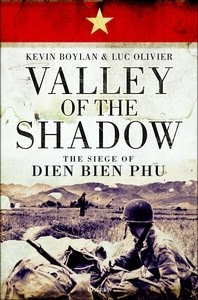


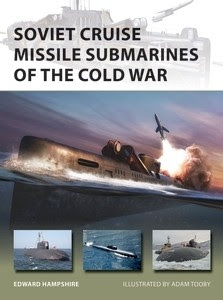



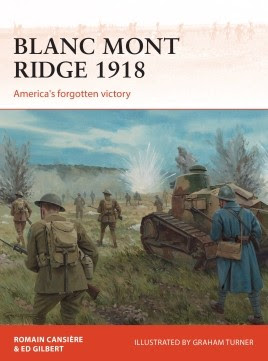
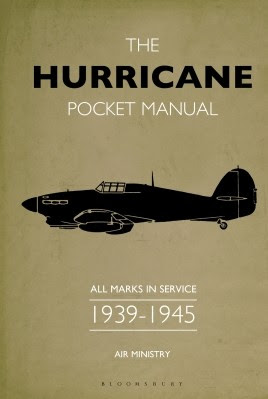
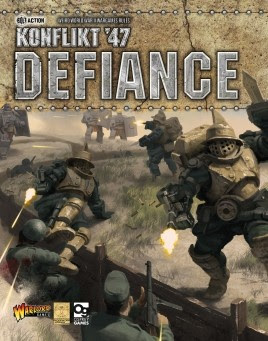

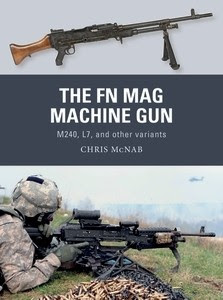

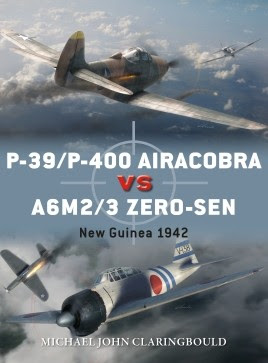

No comments:
Post a Comment